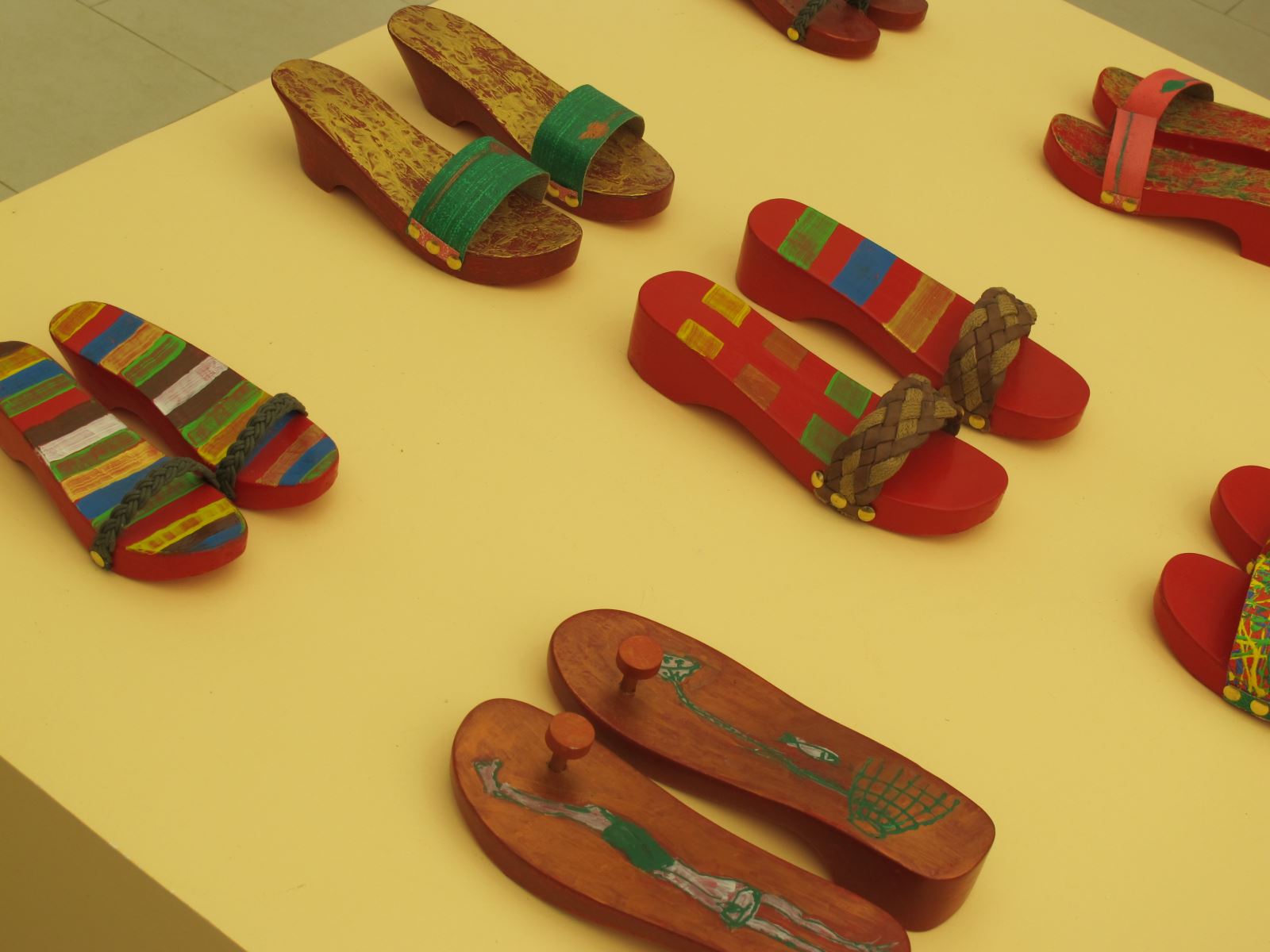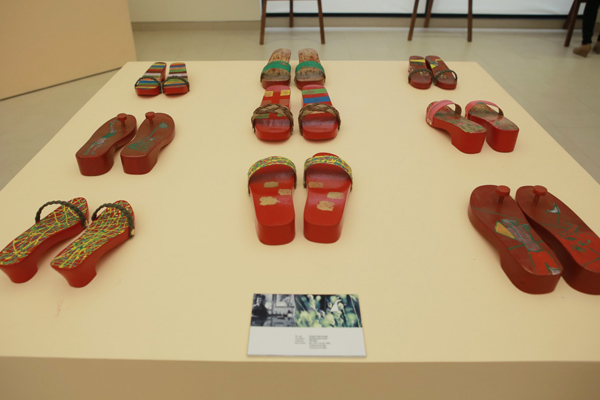Formerly, on cold days, men and women from rural areas would don clogs made from bamboo roots when attending festivals or visiting friends. At home they wrote wooden clogs with vertical straps to protect the toes.

Ancient Chinese books record that in the third century, the leader of a Vietnamese resistance movement, Ba Trieu wore a pair of ivory clogs. However, up until the Tran Dynasty (1225-1400AD), most Vietnamese people went barefoot and clogs were not unknown. Another popular legend tells of a pair of stone clogs passed down for generations by a family in Cao Bang, high in Vietnam’s northern mountains.

Up until the 1940s, young pupils at public schools in the southern province of Ben Tre began wearing clogs. Before the August Revolution in 1945, clogs produced in Hue were called “capital clogs” or guoc kinh. These clogs had soles made from coconut shells or light wood, painted white and gold with embroidered straps.

In the 1950s and 1960s, wooden clogs produced in Dong Do village in the Thanh Tri district of Hanoi and Ke Giay in Ha Tay province were taken to 12 Hang Ga street or Bach Mai street in Hanoi to be painted and sold.
.jpg)
By the 1970s, plastic clogs rivaled wooden clogs in popularity. Considered stylish and comfortable, clogs could offer other, more unusual, benefits. Travelers would sometimes bore holes in the wooden soles to hide gold or jewels.
From Ba Trieu’s ivory clogs to clogs made of bamboo, wood and plastic, this humble footwear has covered a lot of ground on Vietnam.
According to vietnam-travel













